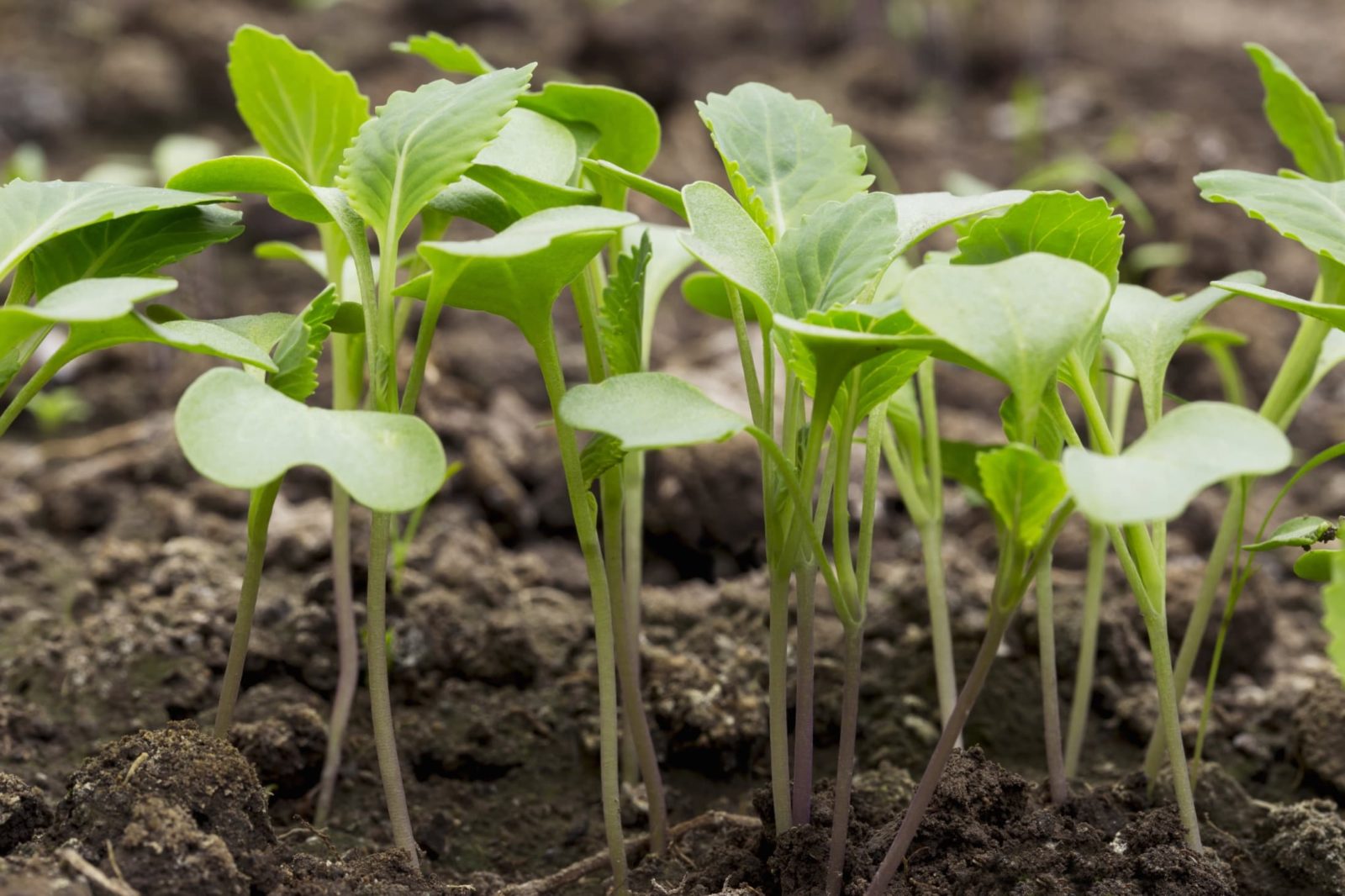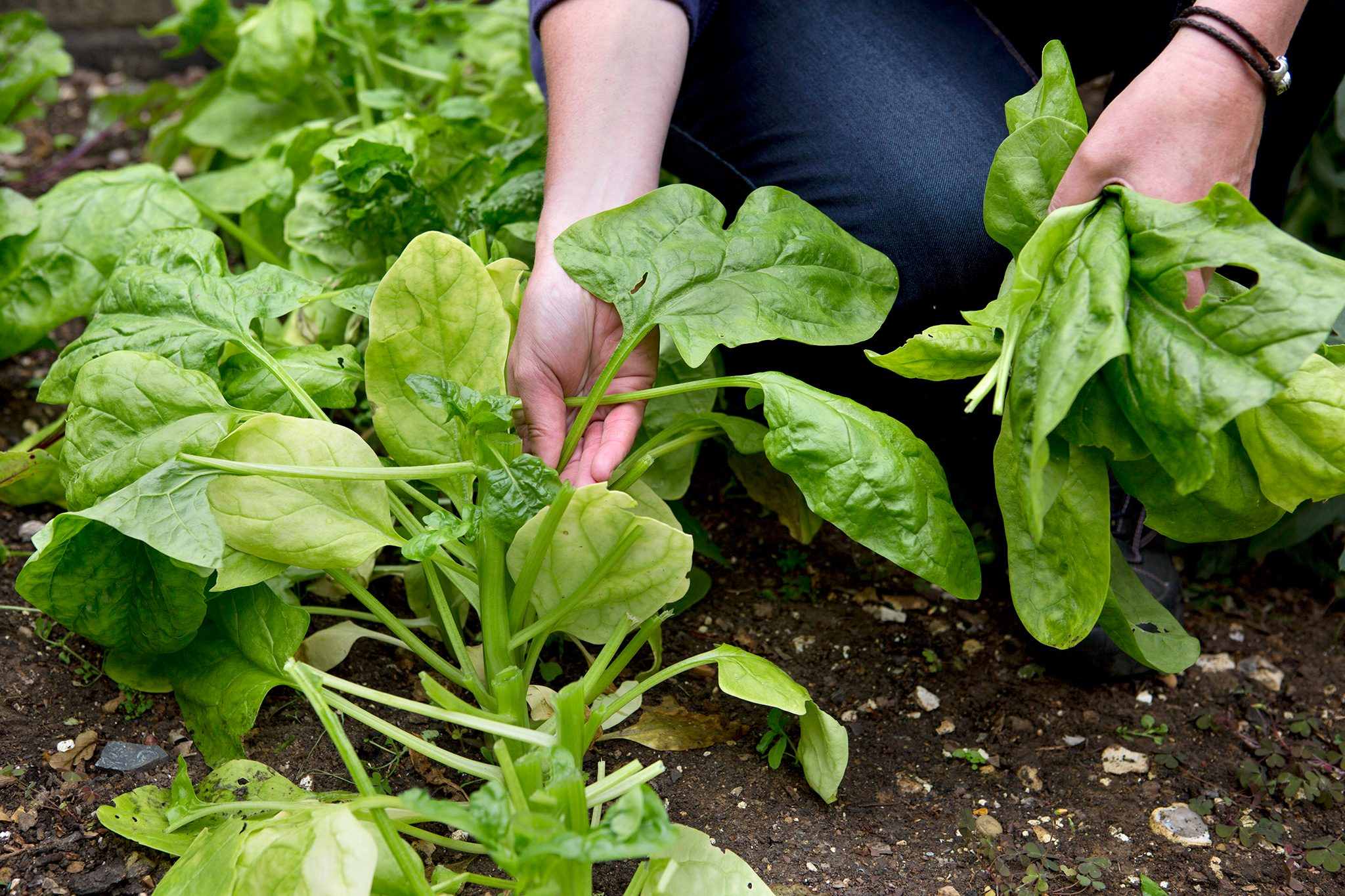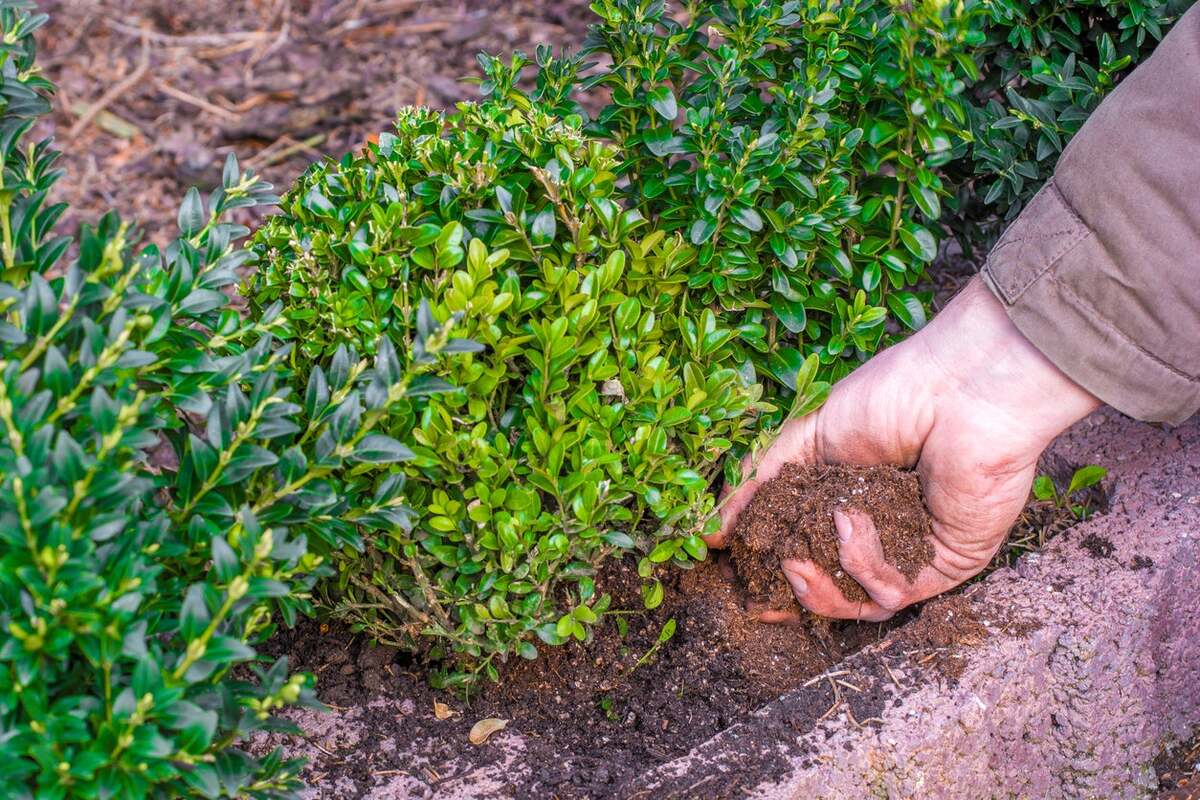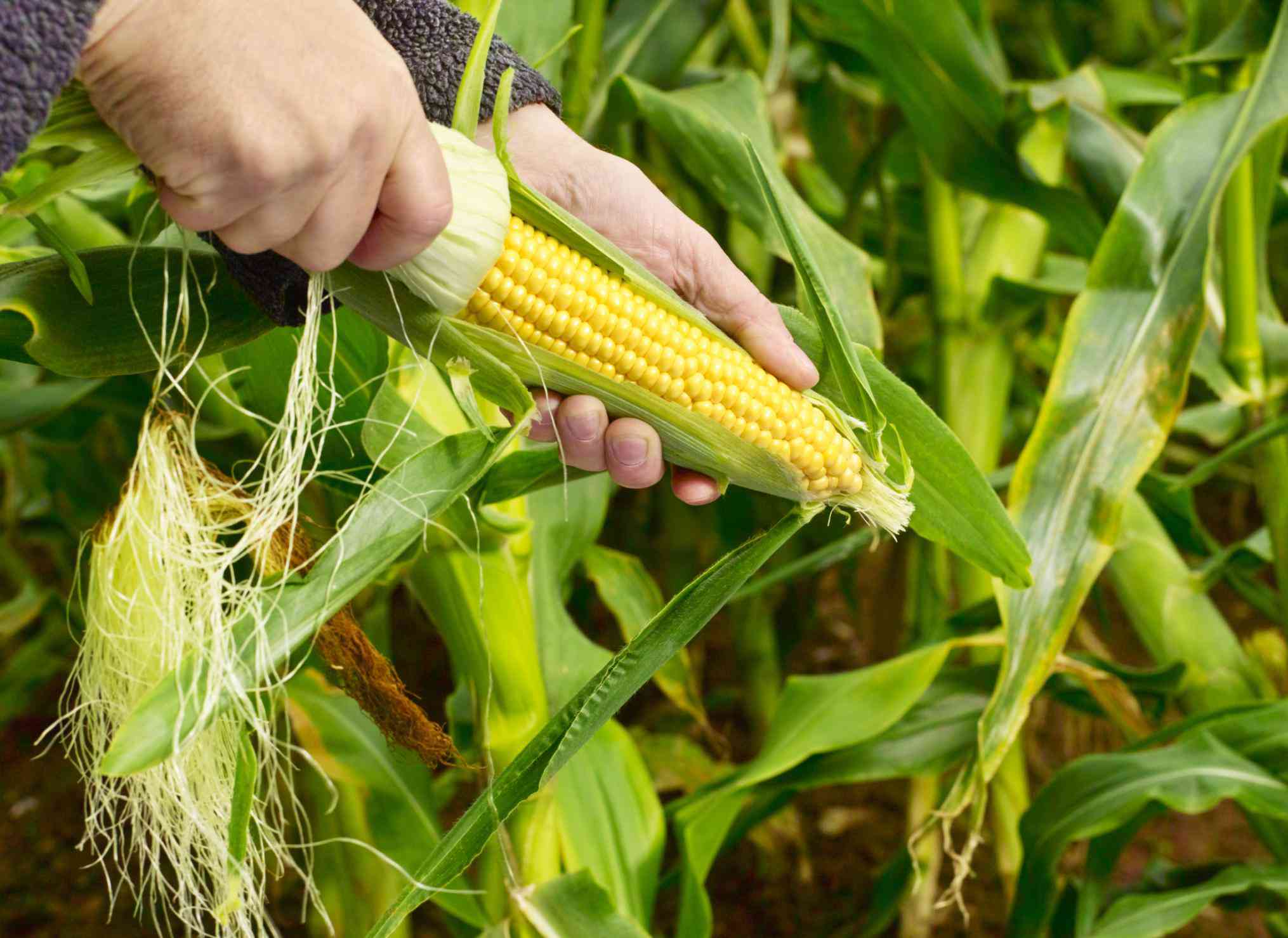Home>Types of Gardening>Ornamental Gardening>How Deep To Plant Allium Bulbs


Ornamental Gardening
How Deep To Plant Allium Bulbs
Published: January 22, 2024
Discover the proper planting depth for allium bulbs in your ornamental garden. Tips and guidelines for successful growth and vibrant blooms.
(Many of the links in this article redirect to a specific reviewed product. Your purchase of these products through affiliate links helps to generate commission for Chicagolandgardening.com, at no extra cost. Learn more)
Table of Contents
Introduction
Welcome to the wonderful world of ornamental gardening! If you have a passion for adding beauty and charm to your outdoor space, then you’re in the right place. One of the most delightful and versatile plants you can grow in your garden is the allium bulb. With their stunning spherical flowers and varied heights, alliums can create a dramatic and eye-catching display that will leave your neighbors envious.
In this article, we will explore the art of planting allium bulbs and help you understand the optimal depth for planting them. Whether you’re a seasoned gardener looking to add a new layer of sophistication to your landscape or a beginner eager to embark on your first gardening adventure, we’ve got you covered.
Before we dive into the specifics, let’s take a moment to appreciate the unique characteristics of allium bulbs. Alliums belong to the onion family (Alliaceae) and are known for their globe-shaped flower clusters that can vary in size, color, and texture. From the towering Allium giganteum to the delicate Allium schoenoprasum, these distinctive flowers can add elegance and drama to any garden.
While alliums are native to the Northern Hemisphere, they can be successfully grown in a wide range of climates and soil conditions. With a little planning and care, you can create a stunning display of alliums that will bloom year after year, enchanting you and your visitors.
Now that we have set the stage, let’s delve into the details of planting allium bulbs and uncover the secrets to growing these remarkable plants.
Understanding Allium Bulbs
Before we get into the specifics of planting allium bulbs, it’s important to have a good understanding of these fascinating plants. Allium bulbs are underground storage organs that provide nutrients and energy for the growth and development of allium plants. They are formed during the previous growing season and contain all the necessary resources to support the growth of the plant.
Allium bulbs are typically round or oblong in shape and are composed of layers called scales. These scales are packed with nutrients and energy reserves, allowing the plant to survive during dormancy and produce beautiful flowers when the conditions are right.
One of the most remarkable characteristics of allium bulbs is their ability to produce spherical flower clusters known as inflorescences. These unique, ball-shaped inflorescences can range in size from small, golf ball-sized clusters to large, basketball-sized globes. The individual flowers that make up the inflorescence are small, star-shaped, and come in a variety of colors, including shades of purple, pink, white, yellow, and blue.
Allium bulbs are also known for their architectural qualities. Some varieties, such as Allium christophii and Allium schubertii, have flower heads that resemble fireworks, with long, radiating petals that create an explosion of color and texture. Others, like Allium karataviense and Allium senescens, have low-growing foliage and compact flower clusters that are perfect for planting in rock gardens or as edging plants.
When selecting allium bulbs, it’s important to choose healthy, firm bulbs that are free from signs of disease or damage. Look for bulbs that are plump and heavy, as these are indications of good quality. The larger the bulb, the bigger the flowers will be, so keep that in mind when making your selection.
Now that you have a better understanding of the anatomy and characteristics of allium bulbs, let’s move on to the next section to learn about choosing the right depth for planting them.
Choosing the Right Depth for Planting
When it comes to planting allium bulbs, getting the depth right is crucial for their successful growth and blooming. The depth at which you plant your allium bulbs will depend on various factors, including the size of the bulb, the soil conditions, and the climate of your region.
A general rule of thumb for planting allium bulbs is to place them at a depth that is three times the diameter of the bulb. For example, if you have a bulb with a diameter of 2 inches, you would plant it at a depth of 6 inches. This ensures that the bulb is adequately covered with soil and provides enough room for the roots to establish themselves.
However, it’s important to note that not all allium bulbs follow this rule. Some smaller varieties, such as Allium moly and Allium oreophilum, should be planted at a shallower depth, around 2-3 inches, while larger varieties, like Allium giganteum and Allium schubertii, may require a deeper planting depth of up to 8-10 inches.
In addition to considering the size of the bulb, you should also take into account the soil conditions of your garden. If you have heavy clay soil that tends to retain water, planting your allium bulbs at a slightly shallower depth can help prevent waterlogging and rot. Conversely, if you have sandy or well-draining soil, planting at a slightly deeper depth can help ensure the bulbs are adequately anchored in the ground.
The climate of your region can also influence the planting depth. In areas with harsh winters and freezing temperatures, it’s advisable to plant allium bulbs slightly deeper to provide them with additional insulation and protection from the cold. On the other hand, in warmer regions, planting at a shallower depth can help promote better root development and prevent the bulbs from becoming overheated.
Ultimately, the goal is to strike a balance between planting at a depth that allows for proper root development while also protecting the bulbs from extreme weather conditions. It may require a bit of trial and error to find the ideal depth for your specific allium bulbs and garden conditions.
Now that you have an understanding of the factors to consider when choosing the right depth for planting allium bulbs, let’s move on to the next section to learn about the step-by-step guide to planting them.
Factors to Consider
When it comes to planting allium bulbs, there are several factors you should take into consideration to ensure their successful growth and flourishing in your garden. These factors will influence the overall health and longevity of your allium plants, as well as the quality and quantity of their blooms.
1. Sunlight: Alliums thrive in full sun, so it’s important to choose a planting location that receives at least six hours of direct sunlight per day. Adequate sunlight is crucial for photosynthesis, plant growth, and the development of vibrant flowers.
2. Soil Drainage: Allium bulbs prefer well-draining soil to prevent waterlogging and rot. If your garden has heavy clay soils, consider improving the drainage by adding organic matter, such as compost or well-rotted manure, to the planting area. This will help create a looser soil structure and promote better drainage.
3. Soil pH: Alliums prefer slightly acidic to neutral soil with a pH range of 6.0 to 7.0. If your soil is too acidic (pH below 6.0), you can add lime to raise the pH. Conversely, if your soil is too alkaline (pH above 7.0), you can add sulfur or peat moss to lower the pH.
4. Climate: Alliums are adaptable plants that can grow in a wide range of climates. However, certain varieties may have specific temperature requirements for optimal growth. Before planting, check the hardiness zone for your specific allium variety to ensure it is suitable for your climate.
5. Companion Plants: Consider the companionship of neighboring plants when selecting the location for your alliums. Planting them alongside other spring and summer blooming perennials or annuals can create a visually striking and harmonious display.
6. Planting Time: Allium bulbs should be planted in the fall, before the first frost hits. This allows the bulbs to undergo a period of dormancy and establish their roots before the growing season begins. Planting at the right time ensures a stronger and healthier start for your allium plants.
By carefully considering these factors, you can create an ideal environment for your alliums to thrive and grace your garden with their stunning blooms. Now that you have a better understanding of the factors to consider, let’s move on to the next section to explore a step-by-step guide for planting allium bulbs.
Step-by-Step Guide to Planting Allium Bulbs
Now that you’ve learned about the important factors to consider, let’s dive into a step-by-step guide to planting allium bulbs. Follow these simple instructions to ensure the successful establishment and growth of your allium plants:
- Select a Suitable Planting Location: Choose a sunny spot in your garden with well-draining soil. Alliums prefer full sun for optimal growth and blooming.
- Prepare the Soil: Loosen the soil using a garden fork or tiller and remove any weeds or debris. Incorporate organic matter, such as compost or well-rotted manure, to improve soil fertility and drainage.
- Determine the Planting Depth: As mentioned earlier, the planting depth will depend on the size of the bulb. Generally, plant allium bulbs at a depth that is three times the diameter of the bulb. However, refer to specific instructions for your allium variety.
- Space the Bulbs: Allium bulbs should be spaced at least 6-8 inches apart to allow room for their growth and development. This ensures that they won’t compete for nutrients and have adequate space to spread their roots.
- Plant the Bulbs: Place each bulb in the planting hole with the pointed end facing upwards. Gently press the bulb into the soil and cover it with soil, ensuring that it is adequately buried at the recommended planting depth.
- Water Thoroughly: After planting, water the area thoroughly to settle the soil and provide moisture for root establishment. Make sure the soil is moist, but not overly saturated.
- Mulch the Area: Apply a layer of organic mulch, such as straw or wood chips, around the planted bulbs. This helps conserve moisture, suppress weed growth, and insulate the bulbs during winter.
- Monitor and Maintain: Keep an eye on your allium plants throughout the growing season. Water them regularly, especially during dry periods, and remove any weeds or competing vegetation.
- Enjoy the Blooms: In the following spring or summer, your allium bulbs will reward you with striking and vibrant blooms. Sit back, relax, and relish in the beauty and elegance they add to your garden.
Following these steps will give your allium bulbs the best chance for success. With proper planting and care, your alliums will flourish and become a highlight of your garden. Now that you know how to plant them, let’s move on to the next section to learn about the proper care and maintenance of allium plants.
Proper Care and Maintenance
To ensure the long-term health and vitality of your allium plants, it’s important to provide them with proper care and maintenance. Here are some essential tips to keep your alliums thriving:
- Watering: Alliums have moderate water needs. Water the plants regularly, especially during dry spells or prolonged periods of drought. Avoid overwatering, as this can lead to root rot. Aim to keep the soil evenly moist but not waterlogged.
- Fertilization: Alliums are not heavy feeders, but a light application of balanced fertilizer in early spring can help promote healthy growth and blooming. Use a slow-release fertilizer or organic compost to provide a gentle and steady supply of nutrients.
- Deadheading: After your allium flowers have faded and dried out, it’s a good practice to deadhead them. This involves removing the spent flower heads to prevent the plant from diverting energy into seed production. Deadheading can encourage the plant to direct its energy towards bulb development for the following year.
- Protection from Pests and Diseases: Alliums are generally resistant to pests and diseases. However, they may occasionally be vulnerable to damage from onion flies or fungal diseases, such as gray mold or basal rot. Regularly monitor your plants for signs of pests or diseases, and take appropriate measures, such as using organic pest control methods or fungicides, if necessary.
- Division and Transplantation: Over time, allium bulbs may become crowded and produce smaller blooms. To rejuvenate your plants, you can dig up and divide the bulbs every three to five years. This allows for better airflow and root development. Transplanting can also be done if you wish to relocate your alliums to a new spot in your garden.
- Winter Protection: Most alliums are hardy perennials and can withstand cold winter temperatures. However, if you live in an area with extremely harsh winters, it’s advisable to provide some winter protection. Apply a layer of mulch or straw around the base of the plants to insulate the bulbs and prevent frost heaving.
By following these care and maintenance practices, you can ensure your allium plants remain healthy, vibrant, and resilient year after year. With proper care, your alliums will continue to grace your garden with their enchanting blooms and unique architectural appeal.
Now that you know how to care for your allium plants, let’s move on to the next section to explore some common mistakes to avoid when growing allium bulbs.
Common Mistakes to Avoid
While growing allium bulbs can be a rewarding experience, there are a few common mistakes that gardeners may unintentionally make. By being aware of these pitfalls, you can avoid them and ensure the optimal growth and success of your allium plants. Here are some common mistakes to avoid:
- Planting at Incorrect Depth: As mentioned earlier, planting allium bulbs at the correct depth is crucial for their proper development. Ensure you follow the recommended planting depth for your specific allium variety to prevent issues such as stunted growth or failed blooming.
- Overwatering: While alliums require regular watering, overwatering can be detrimental. Avoid waterlogging the soil, as it can lead to root rot and other fungal diseases. Allow the soil to dry out slightly between waterings to promote healthy root growth.
- Underwatering: On the other hand, underwatering can cause stress to your allium plants. Ensure they receive sufficient moisture, especially during hot and dry periods. Consistently monitor the soil moisture and adjust your watering schedule accordingly.
- Planting in Poorly Draining Soil: Allium bulbs require well-draining soil to prevent root rot. Planting them in heavy clay soil with inadequate drainage can lead to waterlogged conditions, negatively impacting the health and growth of the plants. Improve soil drainage by amending it with organic matter.
- Planting in Too Much Shade: Alliums thrive in full sun conditions. Planting them in shady areas will result in leggy or weak growth and fewer blooms. Choose a location that receives at least six hours of direct sunlight daily for the best results.
- Not Providing Adequate Air Circulation: Proper air circulation is essential for preventing fungal diseases in allium plants. Avoid overcrowding them or planting them too closely with other plants. Provide enough space between bulbs to allow for good air movement.
- Neglecting Deadheading: Failing to deadhead spent blooms on your allium plants can divert energy away from bulb development. Regularly remove faded flowers to encourage the plant to focus its resources on producing larger and healthier bulbs for future growth.
- Forgetting to Divide Overcrowded Bulbs: Allium bulbs can become overcrowded over time, leading to smaller blooms. Neglecting to divide and replant bulbs every few years can result in reduced vigor and diminished flowering. Divide bulbs when necessary to ensure their continued health and optimal growth.
By avoiding these common mistakes, you can set your allium plants up for success and enjoy a garden filled with vibrant blooms and healthy foliage. With proper care and attention, your alliums will thrive and become a stunning focal point in your outdoor space.
Now that you are aware of the common mistakes to avoid, let’s move on to the next section to address some frequently asked questions about allium bulbs.
Frequently Asked Questions (FAQs)
Here are answers to some frequently asked questions about planting and growing allium bulbs:
- Q: When is the best time to plant allium bulbs?
A: Allium bulbs should be planted in the fall, before the first frost. This allows them to undergo a period of dormancy and establish their roots before the growing season begins. - Q: How often should I water my allium bulbs?
A: Alliums have moderate water needs. Water them regularly, especially during dry periods, but be careful not to overwater. Aim to keep the soil moist but not waterlogged. - Q: Can alliums be grown in containers?
A: Yes, alliums can be successfully grown in containers as long as the containers have good drainage and are large enough to accommodate the growth of the bulbs. Use a well-draining potting mix and place the containers in a sunny location. - Q: Do allium bulbs need to be lifted and stored for winter?
A: Most alliums are hardy perennials and do not need to be lifted and stored for winter. However, if you live in an area with extremely harsh winters, it’s advisable to apply a layer of mulch around the bulbs and protect them from frost heaving. - Q: How long do allium bulbs take to bloom?
A: The exact blooming time can vary depending on the specific allium variety and growing conditions. In general, allium bulbs take around 2-3 years to reach maturity and produce their first blooms. - Q: Can I plant allium bulbs in the spring?
A: While it is possible to plant allium bulbs in the spring, it is generally recommended to plant them in the fall. Planting in the fall allows the bulbs to undergo their required dormancy period and establish their roots before the onset of winter. - Q: Are allium bulbs deer-resistant?
A: Yes, allium bulbs are often considered deer-resistant due to their pungent smell and bitter taste. However, it’s important to note that no plant is completely deer-proof, and hungry deer may still browse on allium foliage or flowers in certain circumstances.
These are just a few commonly asked questions about growing allium bulbs. If you have any further inquiries or concerns, don’t hesitate to reach out to your local gardening resources or consult with fellow gardeners.
Now that we’ve addressed some frequently asked questions, let’s wrap up this comprehensive guide to planting allium bulbs.
Conclusion
Congratulations! You’ve now gained a comprehensive understanding of how to plant and care for allium bulbs. These fascinating plants have the ability to transform your garden with their unique globular flowers and add a touch of elegance to any landscape.
By considering factors such as planting depth, soil conditions, sunlight, and proper care, you can ensure the successful growth and blooming of your alliums. Remember to choose a suitable planting location with well-draining soil, provide adequate sunlight, and water your alliums appropriately.
Proper care and maintenance, including deadheading spent flowers, dividing overcrowded bulbs, and protecting against pests and diseases, will help your alliums thrive and continue to grace your garden with their stunning blooms for years to come. Avoid common mistakes, such as planting at the incorrect depth or neglecting to provide adequate air circulation, to ensure the overall health and vitality of your allium plants.
Whether you choose to plant taller varieties like Allium giganteum to make a bold statement or opt for smaller varieties like Allium moly for delicate accents, alliums are sure to add beauty and charm to your ornamental gardens.
So, grab your gardening tools, select your favorite allium varieties, and get ready to embark on an exciting gardening journey. With the knowledge and tips from this guide, you are well-equipped to create a stunning display of alliums and enjoy their enchanting beauty.
Happy gardening!







